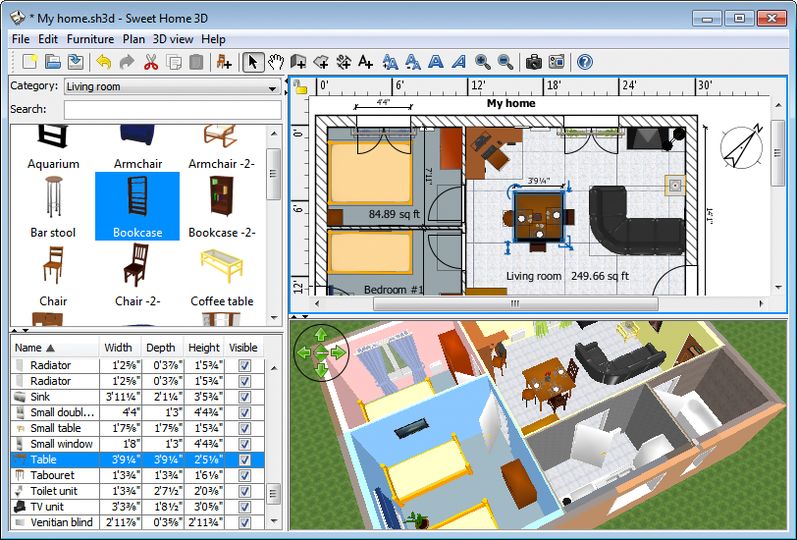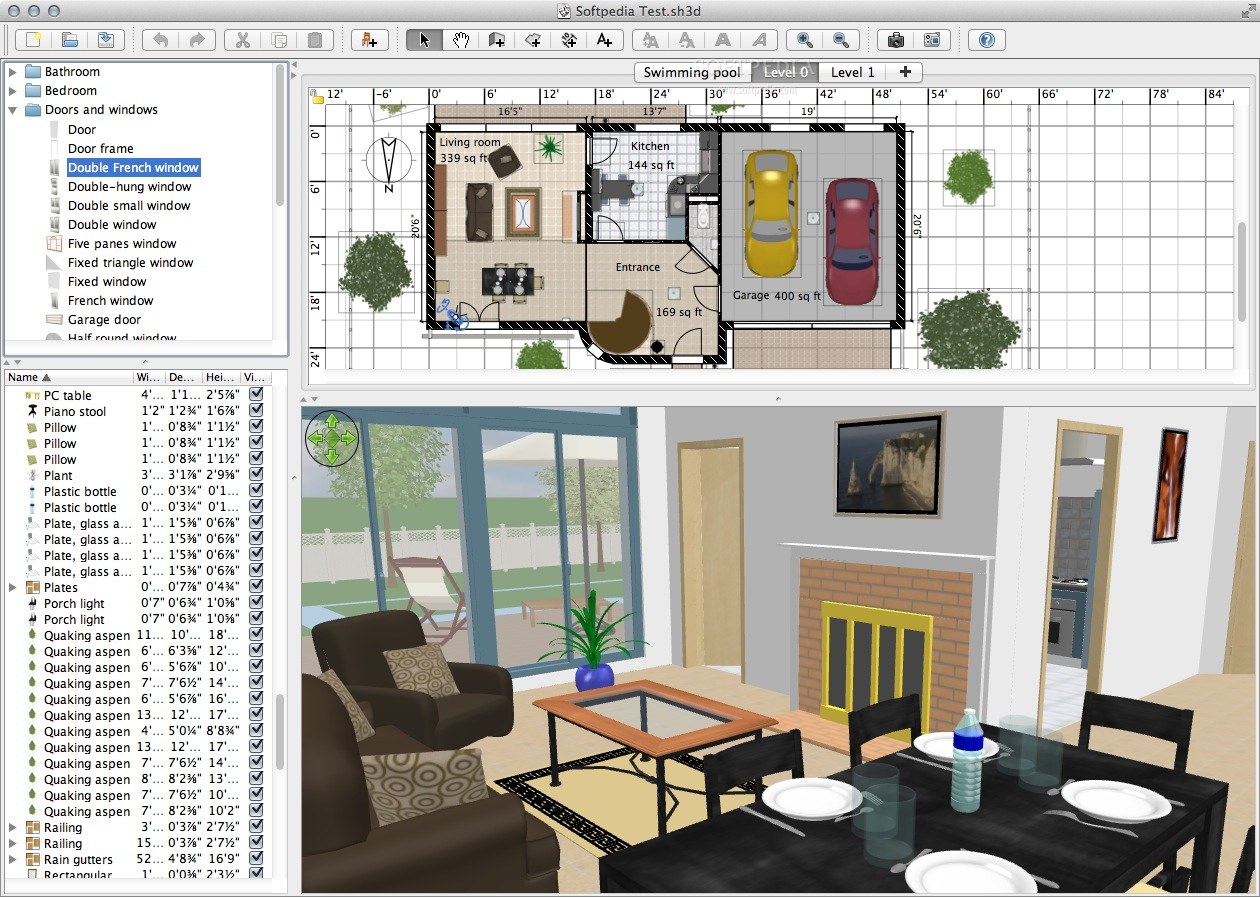Taking The Wheel Of Design: A Review Of Vehicle Modeling In Sweet Home 3D For MacOS
Taking the Wheel of Design: A Review of Vehicle Modeling in Sweet Home 3D for macOS
Taking the Wheel of Design: A Review of Vehicle Modeling in Sweet Home 3D for macOS

Sweet Home 3D, a free and user-friendly home design software, has become a popular choice for both amateur and professional designers. While its primary focus lies on interior design, the software also offers a surprising degree of functionality for modeling vehicles. This review delves into the capabilities and limitations of Sweet Home 3D for vehicle design on macOS, exploring its strengths, weaknesses, and potential applications.
A Beginner-Friendly Approach to Vehicle Modeling
Sweet Home 3D’s intuitive interface makes it a great starting point for anyone interested in vehicle design, even without prior experience. The software utilizes a drag-and-drop system, allowing users to easily place and manipulate objects, including those representing vehicle components. The availability of pre-built shapes and textures simplifies the process, making it accessible for users of all skill levels.
Basic Building Blocks for Vehicle Design
While Sweet Home 3D lacks specialized tools for creating complex automotive curves and surfaces, it provides a solid foundation for building basic vehicle shapes. Users can utilize rectangular and cylindrical objects to form the core structure of a car, truck, or motorcycle. These objects can be further customized by adjusting their dimensions, adding materials, and applying textures.
Table of Content
A Focus on Functionality over Realism
Sweet Home 3D prioritizes functionality over photorealistic rendering. While the software offers a range of textures and materials, it lacks advanced shading and lighting capabilities commonly found in professional 3D modeling software. This limitation makes it less suitable for creating highly detailed or visually stunning vehicle models. However, the software’s focus on simplicity makes it ideal for quickly visualizing and experimenting with different vehicle designs.
Exploring the Capabilities:
- Basic Shapes and Dimensions: Sweet Home 3D offers a library of basic geometric shapes, including cubes, cylinders, and cones, which can be used to build the fundamental structure of a vehicle. Users can adjust the dimensions of these shapes to create vehicles of various sizes and proportions.
- Materials and Textures: The software provides a library of materials and textures, allowing users to apply different finishes to their vehicle models. While the selection may not be as extensive as professional 3D modeling software, it offers enough variety for basic customization.
- Windows and Doors: Sweet Home 3D allows users to add windows and doors to their vehicle models, which can be used to represent features like windshields, side windows, and trunk openings. These features can be customized with different sizes, shapes, and materials.
- From Driveways To Living Rooms: The Rise Of Vehicle-Inspired Home Decor
- Driving Into The Future: A Comprehensive Review Of Homestyler 3D For Vehicle Reviews
- From Curb Appeal To Backyard Oasis: Designing Your Dream Outdoor Space With 3D Home Design Software
- From Curb Appeal To Comfort: How Homestyler Elevates Vehicle Reviews With Interior Design
- Rustic Modern: Where Comfort Meets Craftsmanship In Vehicle Interiors
- Interior Design: While primarily focused on interior design, Sweet Home 3D can also be used to model the interior of a vehicle. Users can place furniture, appliances, and other objects within the vehicle’s interior to create a realistic representation of the cabin space.

Limitations and Workarounds:

- Limited Curve Creation: Sweet Home 3D lacks advanced tools for creating curved surfaces, which limits the ability to model vehicles with complex shapes like sports cars or motorcycles. Users can work around this limitation by using multiple rectangular or cylindrical objects to approximate curved surfaces, but this can be time-consuming and may not produce perfectly smooth results.
- Lack of Advanced Rendering: The software’s rendering capabilities are limited compared to professional 3D modeling software. While it offers basic shading and lighting, it lacks advanced features like global illumination or ray tracing, which can significantly impact the realism of the final render.
- Limited Customization: While Sweet Home 3D offers a range of materials and textures, the selection is limited compared to professional software. Users may find it difficult to achieve specific visual styles or accurately represent certain vehicle materials.
Workarounds and Tips:
- Combine Multiple Objects: To create curved surfaces, users can combine multiple rectangular or cylindrical objects and adjust their positions and dimensions to approximate the desired shape. This technique may require patience and experimentation to achieve satisfactory results.
- Utilize External Resources: Users can create custom textures or models in other software and import them into Sweet Home 3D. This allows for greater control over the visual appearance of the vehicle.
- Focus on Functionality: While Sweet Home 3D may not be ideal for creating highly realistic vehicle models, it excels at providing a functional representation of a vehicle’s design. Users can focus on creating a basic model that accurately depicts the vehicle’s dimensions, layout, and features.
Applications and Use Cases:
- From Driveways To Living Rooms: The Rise Of Vehicle-Inspired Home Decor
- Driving Into The Future: A Comprehensive Review Of Homestyler 3D For Vehicle Reviews
- From Curb Appeal To Backyard Oasis: Designing Your Dream Outdoor Space With 3D Home Design Software
- From Curb Appeal To Comfort: How Homestyler Elevates Vehicle Reviews With Interior Design
- Rustic Modern: Where Comfort Meets Craftsmanship In Vehicle Interiors
- Concept Design: Sweet Home 3D can be used for quickly sketching out and exploring different vehicle design concepts. The software’s simplicity and ease of use allow for rapid prototyping and experimentation with various shapes, layouts, and features.
- Educational Purposes: The software can be used in educational settings to teach students about vehicle design and engineering principles. Its user-friendly interface makes it accessible for students of all ages and skill levels.
- Interior Design: Sweet Home 3D can be used to design the interior of a vehicle, including the placement of seats, dashboards, and other components. This allows for a visual representation of the cabin space and its functionality.
- Customizations and Modifications: The software can be used to model custom modifications or additions to existing vehicles, such as the installation of new seats, audio systems, or interior trim.
Conclusion:
Sweet Home 3D, while primarily a home design software, provides a surprisingly capable platform for basic vehicle modeling. Its user-friendly interface, intuitive tools, and pre-built objects make it accessible for both beginners and experienced designers. While it lacks the advanced features of professional 3D modeling software, its simplicity and functionality make it ideal for exploring design concepts, visualizing vehicle layouts, and creating basic representations for various applications.
Ultimately, Sweet Home 3D offers a unique and valuable tool for vehicle design, particularly for those seeking a user-friendly and cost-effective solution. While it may not be the ideal choice for highly detailed or photorealistic renderings, its focus on functionality and accessibility makes it a valuable asset for conceptual design, educational purposes, and basic vehicle customizations.
sure
Thus, we hope this article has provided valuable insights into Taking the Wheel of Design: A Review of Vehicle Modeling in Sweet Home 3D for macOS. We hope you find this article informative and beneficial. See you in our next article!
Posting Komentar untuk "Taking The Wheel Of Design: A Review Of Vehicle Modeling In Sweet Home 3D For MacOS"